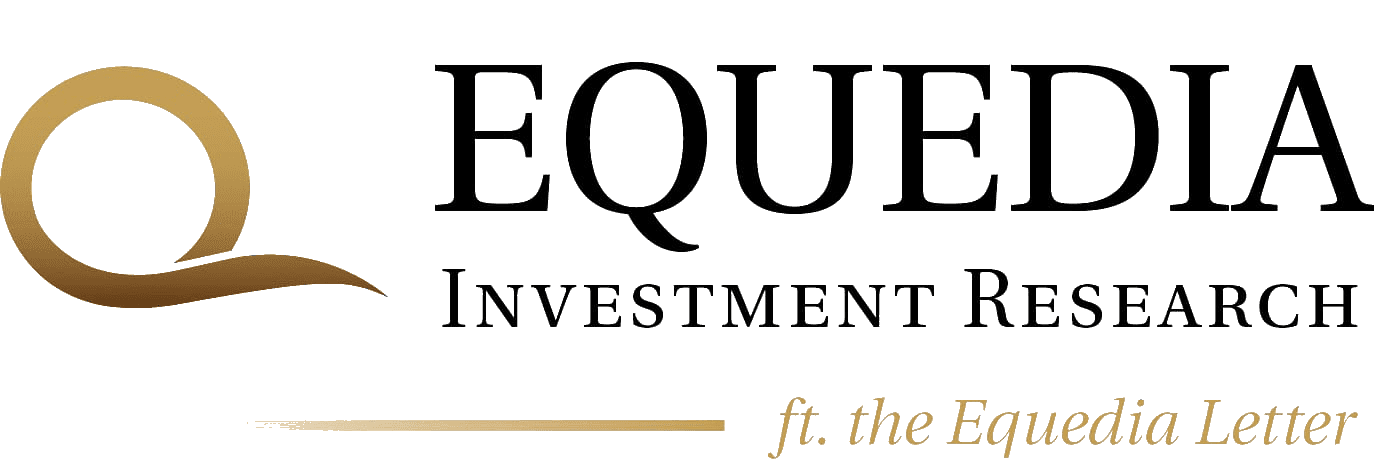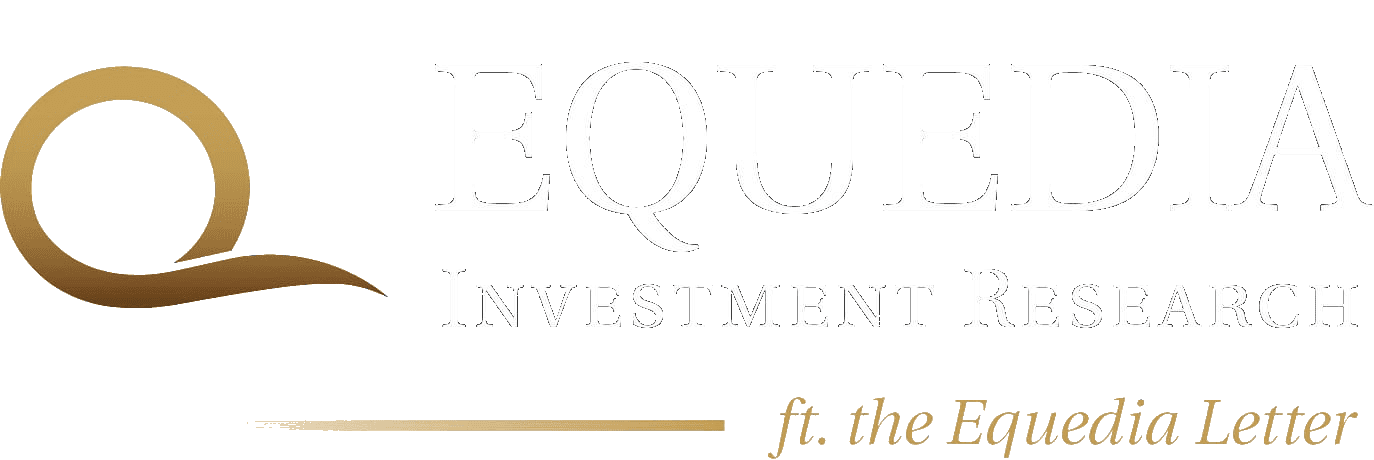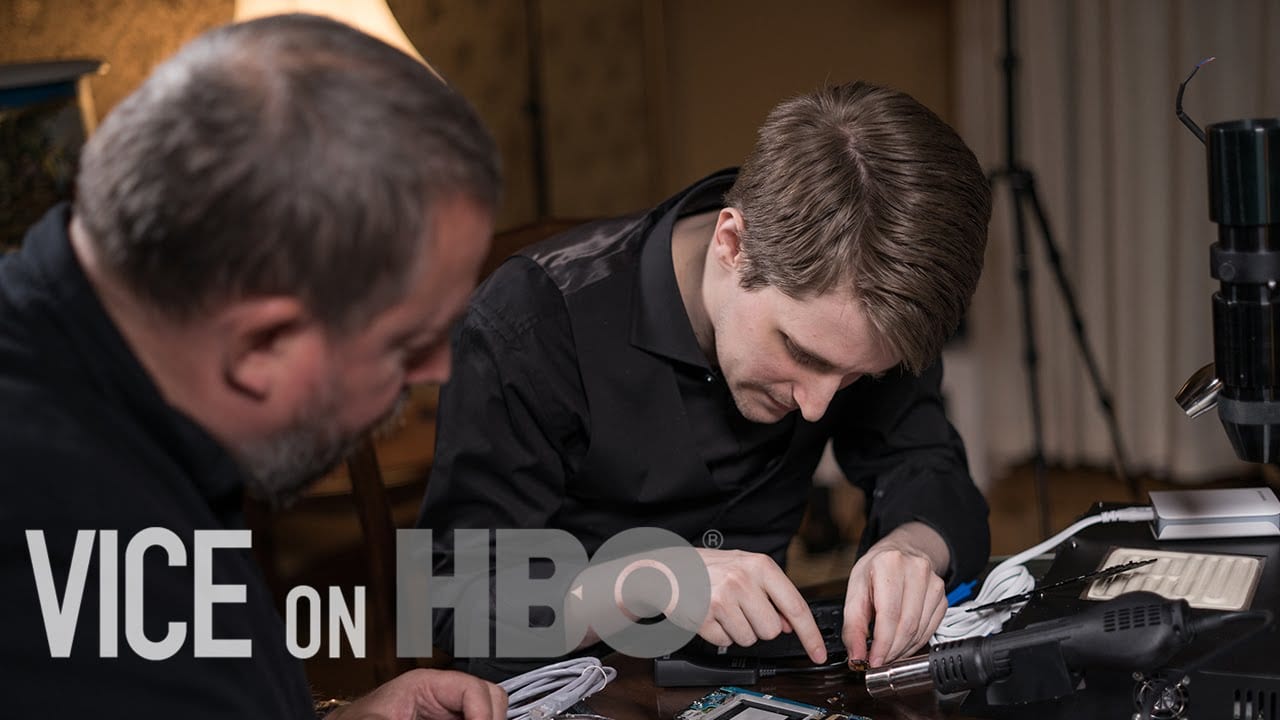Patience can lead to big rewards.
Yet, it is one of the most difficult disciplines to learn – especially when it comes to investing.
Three years ago, I talked about this investor “impatience”:
Via The Shocking Truths About High Frequency Trading:
“According to Business Insider, investors now hold stocks on average for only five days; compare that with the eight years in the 1960s.
If business performance dictates how a stock should react, then companies are now only given five days to succeed. After all, that’s the average time investors are holding stocks now.”
Investors are growing more impatient everyday, turning the stock market into a casino, rather than a platform to help companies grow.
If every investor had this same mentality of instant gratification, then some of the world’s most brilliant technologies would never have been built.
Luckily for us, some of the world’s smartest investors also happen to be the most patient.
Billion-Dollar Payoff
Back in 2003, a small startup had a dream of creating a future generation of cars that didn’t use gas.
The Company would showcase this by building a car that accelerates at least as well as the best sports cars, but is six times as efficient and produces one-tenth of the pollution.
To achieve such a farfetched goal, the Company would need to raise a lot of money.
But as you can imagine, raising money for something so unbelievable at the time wasn’t easy.
How could the Company convince investors that they had the blueprint to make their vision a reality without being able to show it to them?
This seemed like an impossible task at the time.
But one visionary investor saw the future.
In April 2004, this investor led a $7.5 million seed round into the start-up.
According to the SEC S1 Registration Filing, he paid just US$0.493 per share – the equivalent of a penny stock.
Just over six months later in November, the Company built its first proof-of-concept prototype.
Sure, the car was missing all its body panels and looked like a high school science experiment, but it wasn’t there to look pretty – it was there to prove that the company could do what they said they were going to do.
And do it they did.
The prototype not only ran entirely on electricity, but its speed was comparable to some of the best sports cars in the world.
That was more than enough proof to secure the next round of financing.
In February 2005, that same investor led another funding round – a $13 million Series B priced at US$0.74.
And over the next years, he continued to fund the Company while staying patient through the Company’s trials and tribulations – even the crash of 2008.
By staying patient, he gave the Company time to succeed – a rare commodity in today’s market.
It paid off in a big way.
Today, this Company is worth nearly US$32 billion.
More importantly, each share of this Company is now worth over US$218.
That’s a potential gain of over 44,100%.
If you invested $1,000 in this Company during the Series A round, it could be worth over $441,190 today.
And if you invested $10,000 during the Series A round, it could be worth over $4 million today!
How much did this investor make by being patient?
Prior to the IPO of this Company, this one investor owned more than 81 million shares, according to the SEC S1 filing.
All of those shares today could now be worth nearly $18 billion.
This investor is Elon Musk, and the Company is Tesla – the highest-valued automaker in the world.
Of course, we can’t all be Elon Musk, but we can take his patient approach when it comes to investing in disruptive technologies.
Today, I want to give an update on a company whose disruptive technology could soon change the way we see the world.
And in a few months, it will unveil its proof-of-concept prototype – just as Tesla did over a decade ago.
Patience is key here.
NexOptic Technology
(TSX-V: NXO) (OTC: ELSRF)
Earlier this year, I introduced you to NexOptic Technology (TSX-V: NXO), an innovative company developing disruptive lens technologies that could revolutionize conventional lens systems.
The Company’s core technology breaks the basic fundamental of traditional optics: that apertures need to be curved and circular.
The company is one of the first to utilize flat lenses for imaging with its patent pending Blade Optics™ technology.
And it’s advancing rapidly…
If you haven’t read the report, you can now by CLICKING HERE.
But here’s quick refresher:
“From DSLR to iPhone cameras, to the world’s largest telescopes capable of zooming in on stars beyond our galaxy, all of these technologies revolve around a simple concept: gathering, bending, and focusing light.
For nearly 400 years, we have understood that in order to gather and focus light to retain an image, we had to use curved lenses or curved mirrors.
But what if we are wrong?
What if a curved lens or mirror is not the only way to gather and focus light to retain an image?
What if there was another way?
Today, I am going to introduce you to a Company whose founders have broken the basic fundamental of optics: that apertures need to be curved and circular.
The implications for this discovery are startling.
And it all begins with NexOptic Technology.
NexOptic Technology Corp. (TSX VENTURE: NXO) has an option to acquire 100% of Spectrum Optix, a Company developing technologies relating to imagery and light concentration applications. The full details of this deal can be found by CLICKING HERE.
Spectrum’s core technology, the patent-pending Blade Optics™, contains flat lenses and aims to disrupt conventional lens and image capture-based systems. This includes everything from telescopes to cameras and mobile devices, by creating a lens system that reduces the depth (relative to aperture size) currently required in many traditional curved lens stacks.”
Simply put, by completing its proof of concept (POC) prototype, the Company intends to show the world that if you want to see further or take pictures from far away, you don’t need a long and bulky lens system.
You may just need Blade Optics™ technology:
“(The) POC prototype is being designed as a fixed magnification digital telescope with a narrow field of view and will be similar in function to many conventional telescopes sold today.
However, as a result of the application of Blade Optics™, a unique distinction of Spectrum’s lens design is its compressed lens stack depth to aperture ratio compared to traditional curved lens systems for fixed magnification imaging.
This could set Spectrum’s patent pending Blade Optics™ technology apart from existing lens technologies in the fixed magnification lens market, which includes products such as spotting scopes, telescopes, binoculars, certain camera lenses and other imaging products.”
When the founders of Tesla pitched investors that they were going to build an electric car capable of outperforming many gas sports cars, skeptics were everywhere – especially since it wasn’t built yet.
That same mentality could be applied to NexOptic and its Blade Optics™.
How is it possible that NexOptic can do what they say they are doing?
How can they do what no other lens company – including giants such as Meade, Nikon, Canon, Leupold and more – has been able to do in over 400 years?
How can they build a lens stack that utilizes flat lenses?
Validation: Ruda Cardinal
Investing in a startup is risky, but one that is breaking the basic fundamentals of conventional imaging optics may seem even riskier – especially when the technology is so disruptive and could change the way lenses and imaging systems are made in the near future.
So how do we know Blade Optics™ works and how do we know the POC prototype will be a success?
Unless we know the exact details of how they are doing it, we can’t know with 100% certainty.
And even if it was revealed to us, we likely still won’t know – unless we’re Ph.D. optical engineers.
But luckily, we don’t have to.
We can rely on some of the best minds in the industry to do that for us.
An Internationally Recognized Leader
Ruda Cardinal Inc., an internationally recognized leader in optical design, is working on every stage of the POC prototype.
These guys are serious and they design and create prototypes for government agencies, universities, and some of the most highly recognizable Fortune 500 companies in the world.
But that’s not all.
Government Grant
On April 12, 2016, NexOptic received grant funding from the Government of Canada, specifically the National Research Council of Canada Industrial Research Assistance Program (NRC-IRAP).
NRC-IRAP is a vital component of the National Research Council of Canada, regarded worldwide as one of the best programs of its kind for innovative technologies.
I am not saying that IRAP is validating the technology, but they certainly have their own due diligence process.
The grant to NexOptic will be applied to two things:
- Prototype development
- Market Assessment and Strategy Report conducted by a third party firm.
I want to stress the importance of point number 2:
“(The report) is intended to include identifying the top attributes of an ideal use case for Spectrum’s patent pending Blade Optics™ lens technology, sectors and customers that would be a match for the identified attributes, evaluation and ranking of use cases/sectors/customers based on criteria such as: Market Size, Value of Product to Sector, Sector Competitiveness, Ease of Reaching the Sector, Cost of Building Product for Sector, Sustainability of Sector and more.
This report is intended to help develop a suitable commercial marketing strategy to gain traction in the top identified sector.”
In other words, the report could show the market just how big the technology could be and what it could be worth to industry players.
These types of reports can help dramatically propel the valuation of technology stocks – I have seen it with my own eyes from past experience.
But the report isn’t the only thing to keep an eye out for…
Securing Potential Global License Agreements
NexOptic (NXO) has already begun work on securing potential global license agreements for its Blade Optics™ technology.
“SinoSpec will assist the Companies in identifying and securing potential global license agreements for Spectrum’s Blade Optics™ technology.
The Company’s existing strategy is to focus all initial licensing efforts on the consumer telescope, scope, and binocular markets, which are most closely associated with the Prototype.
The Companies believe that there are many other potential verticals for the technology, but these initial markets are most aligned with the Prototype and development of the technology to date.
…The Companies expect that the Prototype will demonstrate to leading firms in the imaging industry clear cases for the applicability and marketability of Spectrum’s patent-pending Blade Optics™ lens technology.
SinoSpec is a multifaceted international corporation which, in addition to overseeing large scale manufacturing, provides its expertise on sophisticated imaging project designs, including product enhancements with the end user in mind.”
Of course, none of this would matter if the POC prototype isn’t completed.
Luckily, we just got word that we’re getting closer.
Almost There
According to NexOptic last week, the majority of the design and engineering work necessary to complete the POC is now complete:
“…The Companies have successfully completed the second phase of their four-phase proof of concept prototype (“POC”) development program.
… With the second phase of the POC development now completed, the Companies have finished a majority of the design and engineering work required to complete the prototype.
… The rigorous optical engineering completed during the second phase of the POC development program included detailed specification, sensitivity and tolerance analysis of all optical elements through simulations. These simulations confirmed that the Spectrum POC lens stack design met the Companies’ criteria for clarity and quality utilizing commercially available optical materials.”
That means the heavy lifting is done, it was a success, simulations have confirmed what the Company set out to do, and we’re now on to the final stages.
It now comes down to ordering the parts, and building it:
“The second phase of the POC development program included, among other things, completion of optical engineering and fabrication-ready optical component drawings and the receipt of quotes for the procurement of optical elements. The optical tolerance analysis from this phase set forth parameters for optical elements and the fabrication of the system in order to ensure that it performs as predicted.
The final optical drawings consist of all optical elements required to manufacture the POC. These have been delivered to established North American optical manufacturers. The Companies are currently reviewing bids from such manufacturers for the procurement of the optical elements required to assemble the POC.”
With that in place, the Company has also revealed what the dimensions of the prototype will be.
“The POC, which is anticipated to have an approximate 5-inch equivalent objective lens and a rectangular aperture, will be a first of its kind telescope.
The POC will have a lens stack depth to aperture ratio near 1:1.
The form factor dimensions of the POC lens stack design (excluding casing and accessories) utilizing Blade Optics™ technology will contain a rectangular aperture and will be approximately:
- Objective Lens: 5-inch equivalent (127mm)
- Depth: 5.02 inches (127.508mm)
- Width: 7.49 inches (190.246mm)
- Height: 9.13 inches (231.902mm)”
Not only does this give us a glimpse of just how disruptive their form factor could be to numerous industries – drones, cameras, scopes, etc. – but it also shows how the design could be utilized for different purposes:
“…With the assistance of Ruda-Cardinal Inc., a global leader in optical prototype construction and design, the Companies were able to increase the back focal distance on the POC design.
This could allow for industry-standard C-Mount and/or CS-Mount cameras and devices. Utilizing these mounts could enable a vast line of product accessories, thereby expanding the value proposition for potential customers in the future.”
An Opportunity
As we move closer to the completion of the prototype, I expect shares of NXO to move higher. The stock has traded within this C$0.30 range for some time now, and it appears the market has shaken out much of the weaker shareholders – the ones who don’t understand what patience is.
But I believe their lack of patience provides an opportunity for more sophisticated investors to participate at these price levels.
I’ve bought more stock since the last report, and continue to add to my position.
I have yet to sell a single share, but why would I? We’re only months away from the completion of the prototype and that’s when the story really begins.
Anyone selling now is either a short-term thinker or not very smart in my eyes.
I am sure that many who heard about Tesla ten years ago thought it would go nowhere.
Yet, today Tesla is the most prized automaker in the world, commanding an insane valuation for its shares.
Via Reuters:
“After a rally that ended in April, Tesla’s market capitalization is currently about $31 billion – equivalent to $620,000 for every car it delivered last year or $63,000 for every car it hopes to produce in 2020.
By comparison, General Motors Co’s $48 billion market value is equivalent to about $4,800 for every vehicle it sold last year.
… Tesla’s heady valuation (is) about 125 times the next 12 months of expected earnings.”
I am not directly comparing NexOptic to Tesla, but there are strong similarities between their two stories.
Tesla had a goal of building a more efficient system for the auto industry whose performance could compete with high-end sports cars.
NexOptic is building a more efficient system for the optics industry whose performance could outperform even some of the best lenses in the world but in much smaller form factor.
What people may not realize is that the optics industry for cameras alone is worth over US$50 billion.
If you take a look at what companies like Apple and Google are doing, you will see that optics is a very important segment of their market.
For example, Apple’s new iPhone 7 is now rumoured to have a two-camera lens system, after a recent patent application was published in January. The patent outlines a dual-camera system that consists of one standard wide-angle lens similar to what’s in the iPhone today and a second telephoto lens capable of capturing zoomed-in video and photos.
Google just announced Project Ara, a modular phone with interchangeable parts, which could include interchangeable camera lenses for different photographic applications.
Those applications are just the tip of the iceberg.
NexOptic’s market cap is barely over C$12 million today.
Imagine what could happen to NexOptic’s valuation when it completes the POC prototype, AND if it can demonstrate that it’s scalable to a mobile device form factor…
Patience, Patience, Patience
The Tesla story is a great example of how patience in investing in disruptive technologies can be extremely rewarding.
Its just one of the reasons why I have yet to sell a single share of my NexOptic stock – despite it hitting a high of $0.41 just months ago.
In fact, I continue to add to my position.
I believe that once the POC prototype is completed, shares of NexOptic won’t stay this low.
Instant gratification has taken a foothold in society and we have become shallow consumers of information.
From man’s most brilliant discoveries to the best investment opportunities, most valuable things take time.
But in our modern digital society, instant gratification is the default response.
If we can learn to overcome these urges of immediacy and learn to be patient, I am confident that the end result could prove extremely fruitful.
Even day traders – traders who trade stocks for the short term – will often tell you that the biggest lesson they ever learned is the lesson of patience.
I am going to be patient with this one.
‘The big money is not in the buying or the selling, but in the sitting.’
– Jesse Livermore (1877-1940)
Seek the truth,
Ivan Lo
The Equedia Letter
www.equedia.com
Disclosure: I am an early investor in the Blade Optics™ Technology, through my investment in NexOptics.
We’re biased towards NexOptic because they are an advertiser. We also own shares which were purchased both in the open market and in the private placements announced on Feb 14, 2014 and Sept 21, 2015, and intend on participating in the private placement announced on June 3, 2016. You can do the math. Our reputation is built upon the companies we feature. That is why we invest in every company we feature in our Equedia Special Report Editions, including NexOptic. It’s your money to invest and we don’t share in your profits or your losses, so please take responsibility for doing your own due diligence. Remember, past performance is not indicative of future performance. Just because many of the companies in our previous Equedia Reports have done well, doesn’t mean they all will. Furthermore, NexOptic and its management have no control over our editorial content and any opinions expressed are those of our own. We’re not obligated to write a report on any of our advertisers and we’re not obligated to talk about them just because they advertise with us.













I love your letter! But you missed the boat re: Musk and Tesla. If you count energy generation, the all electric car is not
a real benefit (not to mention limited mileage). Additionally, Musk owns Tesla, Solar City and Space X – these all require huge capital inputs. Space X doesn’t provide financials. Tesla and Solar City are hyped but with flawed models. A recent
newsletter from Stansberry Research did an in depth analysis of Tesla and Solar City plus all the supporting government subsidies and even discussed future obsolence of electric auto technology, solar panel tech, battery storage/technology, etc.
The end result was a recommendation to short both Tesla and Solar City.
You can obtain this outstanding analysis from Stansberry Research and I think it debunks all the hype.
Thank you for your excellent newsletter.
Thanks Brett. The point of this Letter was not to say that Tesla is a BUY, but to emphasize that patience is a key investment attribute that should not be overlooked – especially when investing in potentially game-changing technology such as Tesla in its early days, or NexOptic today.
Hope this clarifies things!
Thanks for your loyal readership,
Ivan
Thanks for the update on this technology. It still puzzles me why the technology company is being synergized with a Vancouver based former mining company. If promotion is the name of the game then “pump and dump” also comes to mind. Hope I’m wrong?
I am interested in NexOptic, but am also concerned that it may be a scam. Under “IP” they list a couple patent attorneys, and claim filing of a single provisional patent. What kind of protection is that if this is really as big as you tease? The parent company appears to be a failed mining company from Vancouver (which is loaded with failed miners, i.e., shells). They claim “the Company” discovered a new technology but they never name the individual(s) responsible or their bios.
Much of their promotion seems to be “Fame by Association”, including their attorneys, a couple consultants, and Ruda Cardinal. They claim that Ruda is building a “Proof of Concept” telescope for them, and they offer specs such as dimensions and weight, but never address magnification. Who would be interested in a telescope without knowing its magnification?
Is there any public documentation that Ruda Cardinal has in fact have validated the NexOptic claims and is in fact constructing a POC telescope for them that will be completed in the near future. (When, & what magnification?)
Thank you very much. I am an impoverished retiree who could really use a decent stock investment, but I sure don’t need to be taken to the cleaners (again).
Hi Ray and Dave,
Thanks for your comments and questions.
I understand how a technology such as this may be construed the wrong way.
On the one hand, it is an extremely ground-breaking technology; on the other, the market may have a hard time believing it because it is so groundbreaking.
The Company currently has filed a “root” patent, and is in the process of filing others. I have personally met the individuals who discovered this technology and one of them is John Daugela – an extremely bright man.
As far as fame by association, Ruda Cardinal was the one that completed the Trade Study in February 2016, and this was addressed in a public news release. In terms of validation of NexOptic claims, Ruda Cardinal was actually the one conducting the trade study, so the claims are directly from Ruda Cardinal.
Furthermore, the Government of Canada has supported this technology on numerous occasions by funding the Company, and Alberta Innovates Technology Futures (AITF) has invited and has co-hosted Spectrum as part of a contingent of small and medium sized Alberta technology firms to attend the summit. In fact, some of the early work was done with Alberta Centre for Advanced MNT Products, at their facilities.
Now in terms of magnification, this is where it gets tricky – especially since most of us are not optics engineers.
Magnification is a combination of a lot of things including Equivalent Focal Length and Field of View. NexOptic has eluded to a narrow field of view, so I would assume that the magnification would be quite high, since the higher your magnification, the smaller the field of view will be.
Furthermore, magnification may also change depending on the eye piece used, which judging by the previous press release on the ability for the POC prototype to allow for industry standard CMount and/or CS-Mount cameras and devices, that too could change.
I hope this helps.
I am sure you’re not the only one asking these types of questions, so thank you for asking. I believe that is why the market cap is where it is today – its a hard concept for people to grasp: they can’t see it, touch it, or feel it – yet its revolutionary, a first of its kind.
But that is precisely what makes speculating so rewarding. Is there risk? Yes. But to me, at a market cap of barely C$13 million, the potential reward is worth the risk.
Thanks again for your questions and your readership!
Ivan
Hi
I google Flat Lens and was soon to find these two prototypes of flat lenses, so why is Nextoptics so special since all three are developing flat lenses?
http://www.innovationtoronto.com/2016/02/a-flat-optical-lens-just-a-billionth-of-a-metre-thick-promises-to-revolutionize-much-of-the-technology-around-us/ and. http://www.bbc.com/news/science-environment-36438686
There seems to be a lid on the share price at 35-37, whom is selling now? 37 seems to have indefinite numbers of shares since new shares keep on showing as soon as they are bought.
Great questions!
The biggest difference is that these “new” techonlogies use what are called “metamaterials.” As I mentioned, these are not commercial off the shelf solutions (COTS) – in other words, we are likely many, many years away from that type of product to reach the hands of a consumer. Nano-optics are not new and have been in existence since for some time now – but they are unrealistic for consumer use in the near term and have yet to proven scalability.
NXO’s technology, on the other hand, uses COTS materials and thus can be rapidly deployed to existing imaging systems.
Hope this answers your questions!